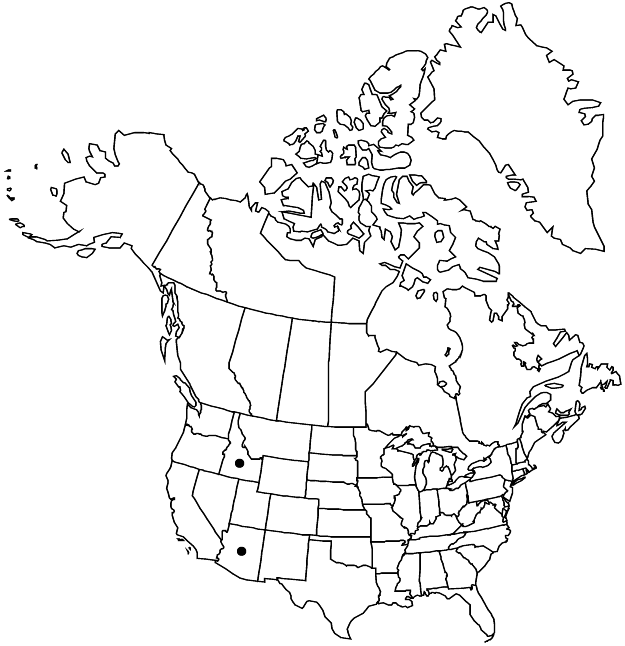Crassula viridis
Just’s Bot. Jahresber. 31(1): 829. 1904,.
Basionym: Tillaea viridis S. Watson Proc. Amer. Acad. Arts 23: 272. 1888
Revision as of 22:27, 16 December 2019 by FNA>Volume Importer
Plants aquatic, annual. Stems decumbent, dark yellowish in age, branched, 5–7 cm. Leaf blades linear, 3–12 mm, apex narrowly acute or attenuate. Inflorescences lax; flowers 1 per node. Pedicels 0.5–6 mm. Flowers 4-merous; sepals triangular-ovate, 0.7–0.8 mm, apex obtuse; petals triangular, 1.3 mm. Follicles ascending, 6–12-seeded, obliquely sublanceolate; old follicles spreading, flat. Seeds oblong to narrowly reniform, 0.4–0.6 × 0.1–0.3 mm, papillate, dull, rugose.
Phenology: Flowering spring.
Habitat: Terrestrial or aquatic, margins of pools and streams
Elevation: 2100-2500 m
Distribution

Ariz., Idaho, Mexico, South America (Brazil).
Discussion
Of conservation concern.
Crassula viridis occurs in the flora area on the Mogollon Rim of Arizona and near Priest River in Conner County, Idaho.
Selected References
None.
Lower Taxa
None.